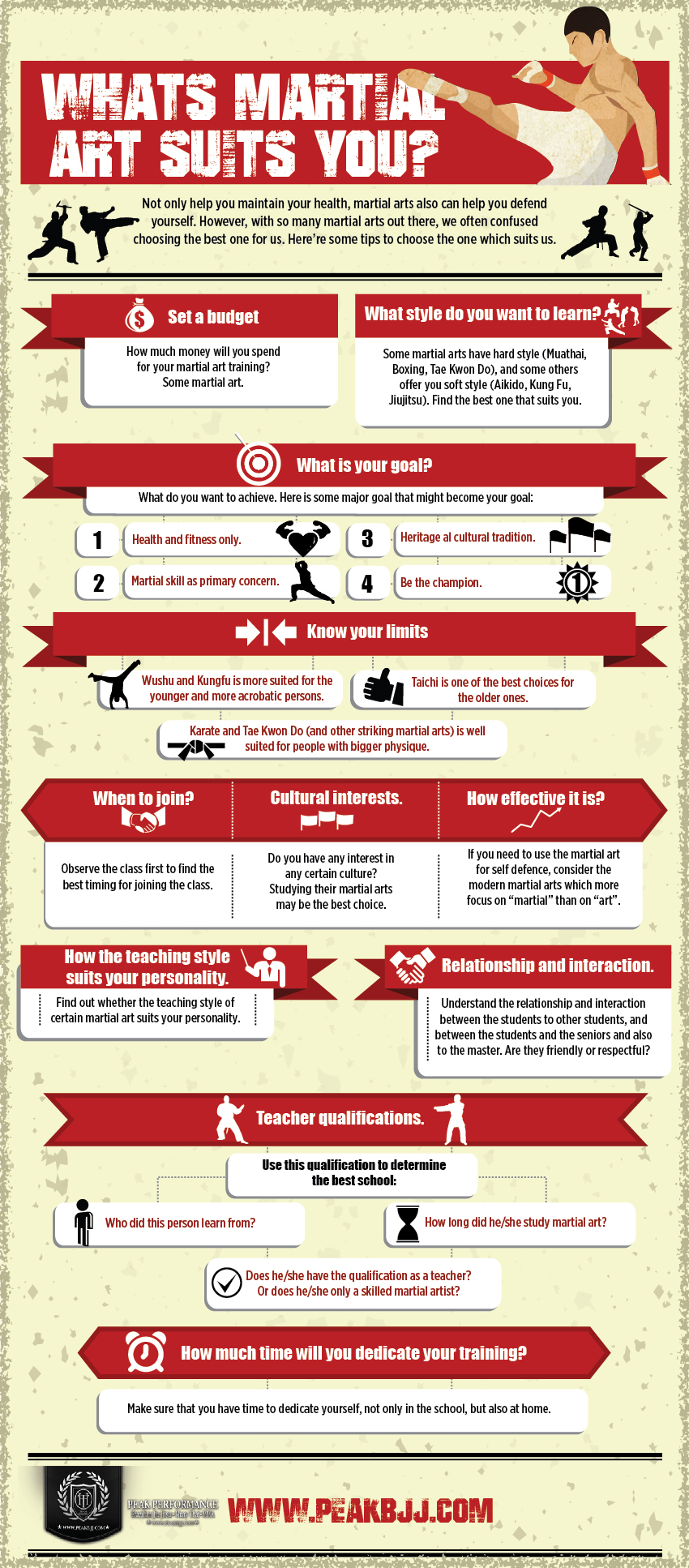Start A Remarkable Journey Into The World Of Martial Arts, Where The Blend Of Olden Custom-Mades And Modern Performance Waits For
Start A Remarkable Journey Into The World Of Martial Arts, Where The Blend Of Olden Custom-Mades And Modern Performance Waits For
Blog Article
Short Article By-Gentry Stokes
Enter the old globe where martial arts were born out of necessity in varied regions. Societies crafted distinct combating styles intertwined with historical contexts. Strategies evolved over centuries through committed practice and social exchanges. Today, modern martial arts blend conventional components for maximum performance. Philosophically, martial arts highlight discipline, self-improvement, and harmony. Regard, humbleness, and equilibrium are foundational concepts leading experts in the direction of growth and strength. Discover the midsts of this rich history and viewpoint to reveal the extensive impacts forming this enduring discipline.
Beginnings of Fighting Style
Fighting style came from various regions around the globe, progressing as functional combat systems to prevent hazards. These ancient fighting styles were developed out of requirement, with each society crafting methods suited to their special atmospheres and obstacles. From the grappling arts of Jujutsu in Japan to the striking methods of Kung Fu in China, martial arts were deeply linked with the historical, social, and social fabric of their corresponding cultures.
In Japan, the samurai course refined martial arts like Kenjutsu, the art of the sword, which later advanced right into the extra popularized type of Kendo. At the same time, in Brazil, Capoeira became a blend of dancing and battle, produced by enslaved Africans as a method to resist injustice. Each fighting style brings with it an abundant background and philosophy, reflecting the values and ideas of individuals who exercised them.
As mouse click the following webpage delve into the origins of martial arts, you discover a tapestry of human ingenuity, durability, and the unyielding spirit of warriors throughout time.
Advancement of Strategies
With centuries of method and refinement, battle techniques within various martial arts have actually undergone an extensive advancement. From ancient designs like Kung Fu and Martial arts to more contemporary self-controls such as Brazilian Jiu-Jitsu and Krav Maga, the development of techniques has actually been driven by a mix of social influences, practical applications, and technological innovations.
One considerable aspect of this advancement is the cross-pollination of techniques in between different martial arts. As an example, methods from conventional Japanese Jiu-Jitsu were included into the production of Judo by Jigoro Kano in the late 19th century. This blending of designs has actually resulted in the advancement of crossbreed martial arts like Mixed Martial Arts (MMA), which integrate components of striking, grappling, and submission methods.
Moreover, the evolution of methods has been shaped by the raising emphasis on efficiency and effectiveness in battle. Professionals have actually constantly sought to refine their strategies with extensive training, testing, and competitors, causing the growth of highly specialized and efficient combating designs. Overall, the advancement of strategies in martial arts reflects the dynamic nature of fight and the recurring mission for improvement and innovation.
Thoughtful Structures
Exploring the underlying philosophical principles of martial arts gives insight into their core worths and directing beliefs. At the heart of lots of martial arts self-controls is the idea of technique itself. By educating your body and mind to act as one cohesive system, you grow technique that prolongs past the dojo or health club right into everyday life. This technique encompasses regard, humbleness, and self-control, forming not simply your physical capacities however additionally your character.
Another essential thoughtful structure in martial arts is the concept of continual self-improvement. The journey of understanding a fighting style is endless, with practitioners regularly aiming to better themselves, both literally and mentally. This focus on development promotes durability, determination, and a growth state of mind that can be related to all elements of life.
Furthermore, martial arts highlight the value of consistency and equilibrium. martial arts for bullying are designed to utilize an opponent's energy versus them, highlighting the principle of producing and redirecting force instead of satisfying it head-on. This philosophy reaches interpersonal partnerships, advertising relaxed resolutions and mutual understanding. By embracing these thoughtful structures, martial musicians not just enhance their battle skills yet additionally cultivate a way of life fixated personal growth, regard, and harmony.
Conclusion
Finally, the history and viewpoint of martial arts use a rich tapestry of practice, discipline, and self-improvement.
Take for instance the tale of Bruce Lee, who changed martial arts by blending various styles and philosophies to develop his very own unique kind of Jeet Kune Do.
Via commitment and advancement, martial artists remain to press boundaries and inspire others to reach their full potential both in combat and in life.
